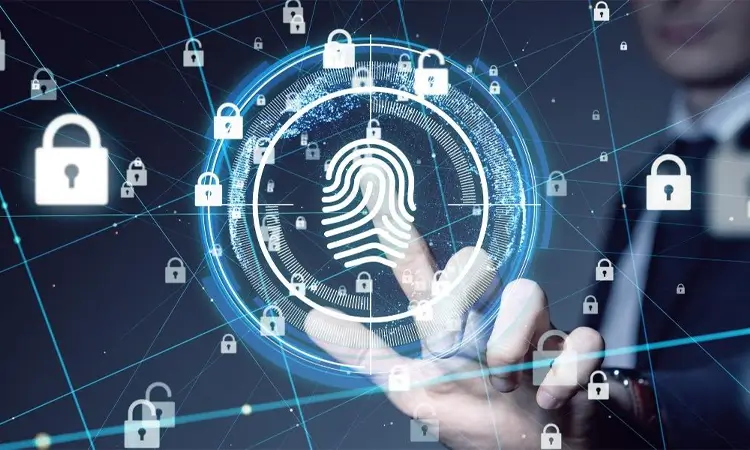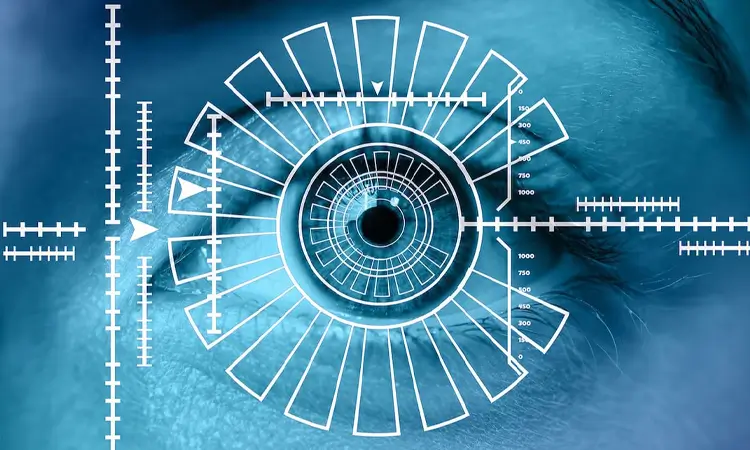Biometric technology is rapidly evolving and changing the way we verify our identities. From fingerprint scanners to facial recognition software, biometrics are becoming more common daily. According to a report by Grand View Research, the biometric technology market is expected to reach $59.31 billion by 2025. With machine learning and deep learning technologies, biometrics is evolving unprecedentedly. It can be applied in various sectors, including healthcare, banking, and digital security. In this article, we will explore the future of biometrics, its trends, market, Pros and Cons.
What are Biometrics, and How does It Work?
Biometrics refers to using unique biological characteristics to identify and authenticate individuals. These characteristics include fingerprints, facial features, iris patterns, voice prints, and DNA. Biometric systems capture these unique characteristics and compare them to a database of pre-existing records. The system matches it to the stored record and authenticates its identity when an individual provides biometric information.
The process of biometric authentication involves three steps: enrollment, verification, and identification. An individual’s biometric information is captured, processed, and stored in a secure database during enrollment. They must verify their identity by presenting their biometric information when an individual wants to access a system or device. The system compares the presented biometric data with the stored data, and access is granted if a match exists.
Biometric technology uses a combination of hardware and software to capture and analyze the unique biometric traits of an individual. The hardware captures biometric data, such as a fingerprint scanner or a camera. The software analyzes this data and compares it to existing records.
Fingerprint recognition is perhaps the most widely used biometric technology, with sensors detecting unique ridge patterns on the fingertips. Facial recognition uses algorithms to analyze facial features such as the distance between the eyes, the nose’s shape, and the jawline’s contours. Iris recognition uses high-resolution cameras to capture and analyze the unique patterns of the iris.
In addition to identification, biometric technology can also be used for authentication. For example, fingerprint recognition can be used to unlock a smartphone, or iris recognition can be used to access a secure facility. Biometrics technology is becoming increasingly popular due to its convenience, accuracy, and ability to enhance security.
Biometrics Technology Pros and Cons
Biometrics Technology Pros
Biometric technology has several advantages over traditional identification and authentication methods.
- Biometric authentication is much more difficult to bypass than traditional password-based authentication. Because the unique physical or behavioral characteristics used for identification cannot be easily replicated.
- Biometric technology is easy to use. It does not require users to remember complicated passwords or carry identification documents.
- Biometrics can also provide real-time monitoring and reporting. It can help organizations identify and respond to security threats quickly.
- Biometric technology can reduce fraud and improve compliance. Biometrics can reduce fraud and improve compliance. People cannot easily change or tamper with biometric data. This makes it a secure and reliable method for verifying identity. It can be particularly useful in industries such as healthcare and finance.
- Biometric technology can also save time and resources. It eliminates the need for manual checks and reduces the risk of human error.
- Biometric technology is versatile and can be used in various applications. Such as border control, banking, and healthcare.
With machine learning and deep learning technologies, biometric technology is becoming more sophisticated, accurate, and reliable. Overall, biometric technology offers many benefits over traditional identification and authentication methods. This makes it an attractive option for businesses, organizations, and governments.
Biometrics Technology Disadvantages
Despite its advantages, biometric technology also has some potential drawbacks and concerns.
- Privacy issue: Biometric data is sensitive and personal. There is a risk of this data being accessed or misused. Individuals may feel uncomfortable with the idea of having their biometric data collected and stored. Biometric data breaches could result in identity theft, financial fraud, and other serious crimes.
- Biometric systems reliability and accuracy issue: Environmental factors can affect biometric technology. Such as lighting conditions, camera angle, and user behavior.
- It is not foolproof: While biometric traits are unique to each individual, they can be altered or stolen. For example, fingerprints can be copied or altered, and facial recognition can be tricked using masks or makeup. Additionally, some biometric traits, such as voice recognition, can change over time due to factors such as illness or aging.
- It is expensive and complex to implement: Organizations must invest in the necessary hardware and software to capture, store, and analyze biometric data.
- It may not work for everyone: Some individuals may not have sufficient biometric data for accurate identification.
- Biometric systems can go wrong: It can lead to false positives or false negatives. This can be particularly problematic in security-critical applications such as border control. This inaccurate identification can lead to security breaches or delays in processing.
- Biometric data can be hacked or stolen: As biometric data is stored electronically, there is a risk of data breaches. This could result in identity theft or other forms of fraud. As such, organizations and governments need to take appropriate measures to secure biometric data and prevent unauthorized access.
How is Biometrics Evolving Technology?
Biometric technology is rapidly evolving thanks to machine learning, deep learning, and artificial intelligence advancements. These technologies have enabled the development of more sophisticated and accurate biometric algorithms. They can recognize and analyze a wider range of physical and behavioral traits.
One of the main trends in biometrics is multimodal biometrics. It combines multiple biometric traits for more robust and accurate identification. This can include using facial recognition and voice recognition together. Or iris recognition and fingerprint recognition together.
Another area of evolution is in the use of biometrics for continuous authentication. This means biometric traits are constantly monitored and analyzed to detect changes or anomalies. This can increase security and reduce the risk of fraud, particularly in online transactions or remote work scenarios.
Moreover, biometric technology is becoming more versatile and accessible with the development of wearable biometric devices such as smartwatches or fitness trackers. These devices can capture biometric data such as heart rate, skin conductance, or body temperature. They can be used for authentication or health monitoring.
Biometric technology is also evolving regarding privacy and security, with the development of techniques such as homomorphic encryption. It allows biometric data to be processed and analyzed without being decrypted. It reduces the risk of data breaches. Overall, biometric technology constantly evolves and improves, with new applications, techniques, and innovations emerging regularly.
Why is Biometrics Important?
Biometrics is important because it offers a more secure, convenient, and accurate way of identifying and authenticating individuals. With the increasing threat of cybercrime and identity theft, biometric technology provides a reliable and robust defense against these risks.
Biometric technology is also important for improving efficiency and reducing costs. Traditional identification and authentication methods can be time-consuming, expensive, and error-prone. Biometric technology eliminates many of these inefficiencies and helps to streamline processes.
Moreover, biometric technology can help to reduce fraud and increase accuracy in various sectors. Such as healthcare, banking, and border control. By using biometrics, these sectors can prevent identity theft, reduce errors in record-keeping, and improve overall security.
Another reason why biometric technology is important is its potential to provide greater accessibility and inclusivity. Biometrics can identify individuals who may not have traditional forms of identification. Such as refugees or individuals without official government documents.
The Biometric Technology Current Market
The biometric technology market is currently experiencing rapid growth, driven by increasing demand for secure and efficient identification and authentication solutions. According to a report by MarketsandMarkets, the global biometric system market size is projected to grow from USD 33.0 billion in 2020 to USD 76.6 billion by 2025, at a CAGR of 18.2% during the forecast period.
Fingerprint recognition is the most widely adopted biometric technology, followed by facial recognition and iris recognition. These technologies are commonly used in various sectors, including government, healthcare, banking, and transportation.
The Asia-Pacific region is expected to witness the highest growth in the biometric technology market due to increasing government initiatives and investments in digital identity systems. The United States and Europe are also significant markets for biometric technology, driven by increased security concerns and the adoption of biometric-based payment systems.
The COVID-19 pandemic has also contributed to the growth of the biometric technology market. Because contactless biometric solutions have become increasingly important for public health and safety. This has led to a shift towards touchless biometrics, such as facial recognition and voice recognition, which can be used without physical contact.
The biometric technology market is expected to continue to grow in the coming years. This is driven by increasing demand for secure and efficient identification and authentication solutions, technological advancements, and government initiatives.
The Future Market of Biometric Technology

The future biometrics market looks promising, with significant growth expected in the coming years. By 2027, the global biometrics market is projected to reach $79.8 billion, with a compound annual growth rate (CAGR) of 17.4% between 2020 and 2027.
The demand for biometric technology is expected to be driven by increasing security concerns, the growing adoption of mobile biometrics, and the emergence of new applications and use cases.
The government sector is expected to remain the largest market for biometric technology. This is driven by the growing demand for border control, law enforcement, and national ID programs.
In addition, the healthcare sector is expected to be a major growth driver for biometrics as demand for secure and accurate patient identification and authentication continues to rise.
The adoption of biometric technology is also expected to expand beyond traditional sectors such as government and finance. They will enter new areas such as retail, entertainment, and hospitality.
The Future of Biometrics in Different Applications
Biometric technology is rapidly evolving and expanding, with various sector applications. Here, we will explore the future of biometrics in different applications. Including healthcare, banking, authentication, fingerprint, digital security, and mobile payments.
The Future of Biometrics in Healthcare
The healthcare industry increasingly adopts biometric technology for secure and accurate patient identification and authentication. In the future, biometrics could help to reduce medical errors and fraud, improve patient safety, and enhance the overall quality of care. For example, biometrics could be used to identify patients before administering medication or treatment. It can reduce the risk of errors and ensure that patients receive the right care. Biometrics could also secure electronic health records, protect patient privacy, and prevent unauthorized access.
The Future of Biometrics in Banking
The banking and finance industry is a significant market for biometric technology, with increasing demand for secure and convenient authentication for online banking and mobile payments. In the future, biometrics could play an even more significant role in banking. It will potentially replace traditional forms of authentication such as passwords and PINs. Biometrics could also help to reduce fraud, improve the customer experience, and enhance overall security.
The Future of Biometrics in Authentication
Authentication is another area where biometric technology is expected to see significant growth in the future. Biometric authentication is becoming increasingly popular as a more secure and convenient alternative to traditional authentication methods such as passwords and PINs. Biometric authentication can be used in various applications, from unlocking smartphones and computers to accessing secure facilities and making payments.
The Future of Biometrics in Fingerprint
Fingerprint recognition is one of the most widely used biometric technologies, and its adoption is expected to continue to grow in the future. Fingerprint recognition is widely used in applications such as smartphones, computers, and access control systems, and it is also used in law enforcement and border control. The future of fingerprint recognition is expected to see continued innovation and improvement, with new technologies such as ultrasonic fingerprint recognition and 3D fingerprint recognition being developed.
The Future of Biometrics in Digital Security
Digital security is an increasingly critical area, with growing threats from cybercrime and data breaches. Biometric technology can play a significant role in digital security. It helps to protect against unauthorized access and identity theft. In the future, biometric technology could be used for more applications in digital security. Such as securing cloud-based services and securing IoT devices.
The Future of Biometrics in Mobile Payments
Mobile payments are becoming increasingly popular, with growing demand for secure and convenient payment solutions. Biometric technology can play a significant role in mobile payments, providing secure and convenient transaction authentication. In the future, biometrics could be used for even more applications in mobile payments, such as person-to-person payments and contactless payments.
How do People Feel About Biometrics?
People have mixed feelings about biometrics. Some individuals see biometrics as an innovative and secure way of verifying their identity, while others view it as violating their privacy and civil liberties.
A 2019 survey conducted by the Pew Research Center found that 52% of Americans feel uncomfortable using facial recognition technology, with 56% expressing concerns about the potential misuse of biometric data. Another study by Accenture found that 60% of consumers are willing to share their biometric data with banks for security purposes, while 68% are willing to share it with healthcare providers.
However, a 2018 study by the University of Cambridge found that people were likelier to share their biometric data if they trusted the organization collecting it and perceived a tangible benefit. Overall, people’s attitudes toward biometrics are complex and dependent on various factors, including trust, perceived benefits, and concerns about privacy and security.
The future of biometrics is bright. As technology evolves, biometrics will play an increasingly important role in our lives. Despite the challenges and concerns, continued innovation and development will lead to exciting opportunities for the future of biometrics.
More Questions About Biometrics
Is the Use of Biometrics Going to Make Our Everyday Lives Safer?
Using biometrics can enhance security and reduce fraud, but it also raises concerns about privacy, security, and discrimination. Therefore, you must weigh the benefits and potential risks to ensure they are used responsibly and ethically.
Why is Biometrics Becoming Popular?
Biometrics is becoming popular due to its ability to enhance security and improve efficiency in various industries, including law enforcement, healthcare, and finance. Additionally, technological advancements and increasing public acceptance have contributed to its widespread adoption.
Why are biometrics better Than Passwords?
Biometrics are better than passwords because they are more secure and difficult to hack. Biometric identifiers cannot be lost, stolen, or forgotten like passwords. Biometric authentication is also faster and more convenient than typing in a password. Additionally, biometric identifiers are unique to each individual, making it more difficult for hackers to impersonate someone else. However, biometric authentication is not foolproof. It can be vulnerable to spoofing and other forms of attacks. Therefore, you must implement this technology responsibly and safely.
Video Sources: Federal Bureau of Investigation









